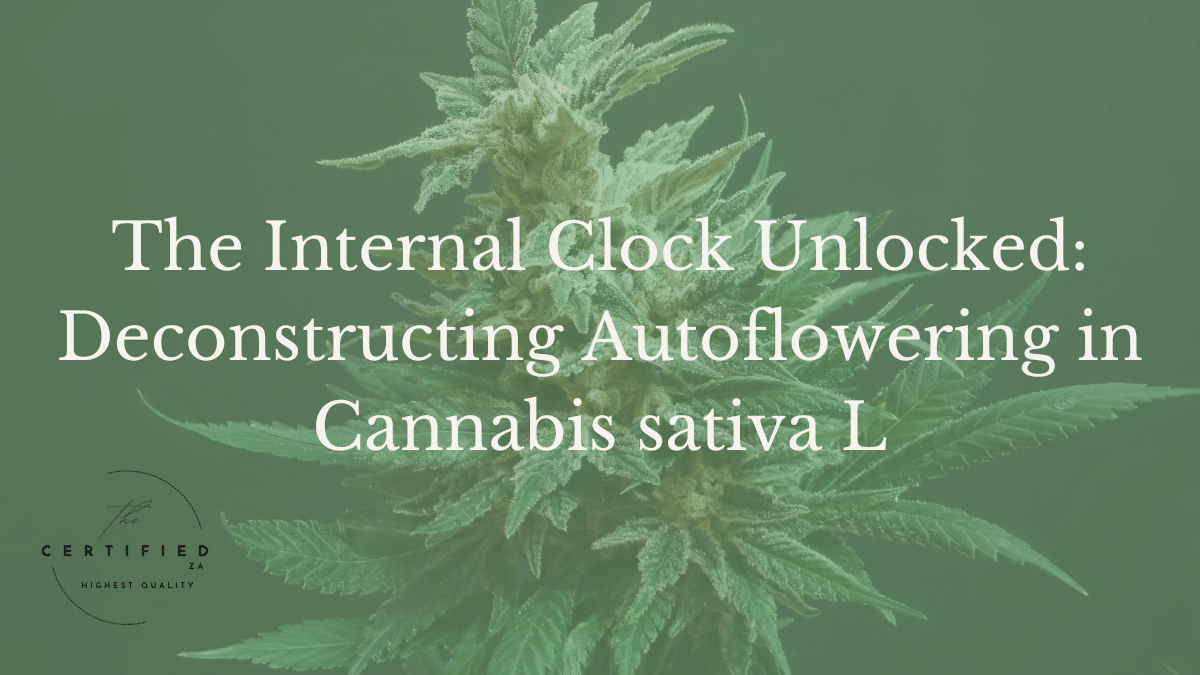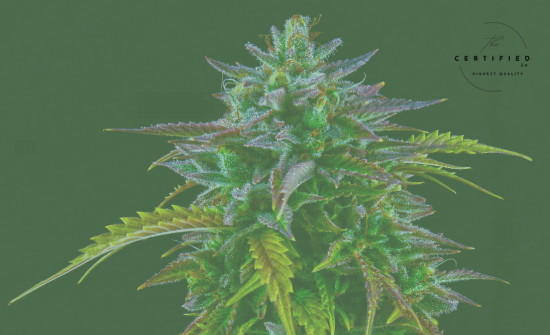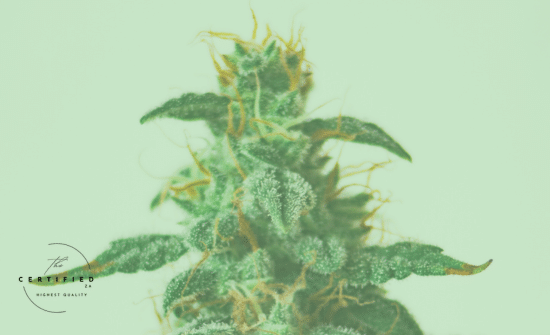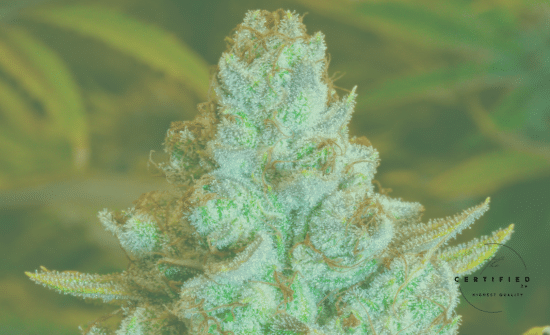
No audio available
This week, we turn our analytical focus to a genetic innovation that has profoundly reshaped the landscape of cannabis cultivation: autoflowering strains. For the commercial cultivator and the dedicated hobbyist alike, the ability to bypass the rigid control of photoperiodism offers compelling advantages in efficiency, timing, and environmental management. Understanding the biology that underpins this phenomenon—a blend of evolutionary adaptation and precise genetic mapping—is key to maximising the potential of these unique cultivars.
The Photoperiodic Standard: A Lesson in Environmental Signalling
For the majority of Cannabis sativa L strains derived from traditional sativa and indica lines, the transition to reproductive development is a tightly regulated event governed by the perception of changing seasons. These plants are fundamentally photoperiod-sensitive short-day plants (SDPs).
The mechanism hinges on the detection of long nights, mediated by a complex molecular pathway. Central to this is the florigen signal, the systemic mobile signal synthesised primarily in the leaves and transported through the phloem to the Shoot Apical Meristem (SAM). In model systems, the gene encoding this signal is FLOWERING LOCUS T (FT). Under inductive (short-day) conditions, this signal reaches the SAM, where it interacts with other transcription factors to reprogram the meristem, halting the production of vegetative leaves and initiating the development of floral structures. The success of these strains is thus contingent upon the grower’s ability to enforce an extended period of uninterrupted darkness—the 12/12 photoperiod—to ensure high levels of this florigen signal accumulate at the right time. Learn more here.

The Ruderalis Revolution: Age as the Ultimate Trigger
Autoflowering cannabis circumvents this dependence entirely, a trait introgressed from the hardy subspecies Cannabis ruderalis. This adaptation arose from Ruderalis‘s need to complete its life cycle rapidly in northern latitudes with very short summers.
Crucially, the switch to flowering in autoflowers is dictated by maturity, not day length. While the research indicates that the initial development of solitary flowers in the leaf axils can be age-dependent even in photoperiod-sensitive plants grown under long days, the autoflowering trait ensures the entire plant architecture commits to flowering once a certain developmental threshold is crossed, regardless of the light exposure (e.g., 18 hours of light). The genetic determinant for this independence, the Autoflower1 locus, has been mapped and is recognised as being inherited in a simple, recessive Mendelian fashion.
Architectural Blueprint: The Compound Raceme
The shift from vegetative growth to flowering in response to photoperiod (or age in autoflowers) is not merely a change in hormone levels; it is a dramatic transformation of shoot apex architecture.
Under long-day (vegetative) conditions, the main stem exhibits monopodial growth, producing numerous, clearly defined phytomers. Each phytomer is architecturally repetitive, consisting of an internode, a single large foliage leaf, two subtending bracts positioned at the leaf axil base, and an axillary shoot, alongside two solitary flowers developing in the axil.
When the short-day signal is perceived (or maturity is reached in an autoflower), the plant executes a profound shift:
- Intense Branching: The SAM orchestrates intense branching, with the main axis developing into what is botanically defined as a highly branched compound raceme.
- Condensed Structures: The higher-order branchlets making up the terminal inflorescence are condensed, retaining the basic phytomer structure but with severely reduced leaves and internodes.
- Floral Units: The defining characteristic of the female inflorescence structure remains the pair of solitary flowers subtended by bracts, but these are now clustered tightly along the rapidly formed axes. In some lines, the terminal meristem itself terminates by differentiating a single terminal flower, a process observed in certain cultivars under experimental conditions.
This architectural reorganisation optimises the plant to produce reproductive structures quickly and densely, maximising the accumulation of secondary metabolites within the glandular trichomes, which are situated on these floral and bract tissues.

Precision Breeding: Gene Dosage and Ploidy Control
The challenge for modern breeding programs is to harness the speed of the autoflower trait while retaining the high productivity and cannabinoid profiles of elite photoperiod strains. Research into ploidy manipulation has yielded significant insights here, confirming the incomplete dominance of the photoperiod-sensitive allele (‘A’).
Studies evaluating diploid and triploid hybrids demonstrate a clear dosage effect:
- In diploid hybrids combining the recessive ‘a’ and sensitive ‘A’ alleles (genotype Aa), flowering time is intermediate between the pure autoflower (aa) and pure photoperiod-sensitive (AA) parents.
- In triploid crosses, the reduction of the ‘A’ allele dosage from AAA to AAa to Aaa directly correlates with a predictable reduction in the time to terminal flowering. The Aaa genotype, possessing only one ‘A’ allele, flowers significantly earlier—sometimes over a month sooner in field trials—than the AAa or AAA counterparts.
This predictable response confirms that the introduction of the ‘a’ allele, even in a small dosage within a polyploid background, confers a substantial advantage in hastening the reproductive cycle. This is particularly relevant for developing early-flowering triploids, which inherently possess reduced fertility, offering a twofold benefit for seed management in flower production.
Cultivation Implications: Speed vs. Potential
The utility of autoflowering genetics stems directly from this age-dependent control mechanism:
- Accelerated Phenology: Autoflowers offer the definitive benefit of quicker harvest, often completing their cycle in just 45 to 75 days. This rapid turnaround is invaluable for maximising annual yields in environments with limited growing windows.
- Mitigation of Environmental Hazards: By finishing well before the onset of harsh late-season conditions—such as unpredictable frosts or persistent damp weather that encourages fungal pathogens like Botrytis—autoflowers provide a crucial risk-avoidance strategy.
However, this accelerated schedule mandates a different approach to cultivation management. The most significant limitation is the yield ceiling. Because the vegetative phase is compressed by the internal clock, autoflowers yield significantly less flower per unit area than photoperiod-sensitive plants allowed an extended growth period. Furthermore, any severe stressor, especially transplant shock, can trigger premature flowering commitment, permanently reducing yield potential.

In conclusion, autoflowering Cannabis is a triumph of applied evolutionary genetics. By understanding the molecular mechanisms that allow C. ruderalis to decouple flowering from photoperiod—effectively bypassing the need to wait for the florigen signal triggered by shortening days—breeders have introduced an indispensable tool to the industry. The continued exploration of gene dosage effects, as seen in triploid hybrids, promises even greater precision in tailoring these rapid-cycle cultivars to specific market demands while maintaining high-quality expression.
